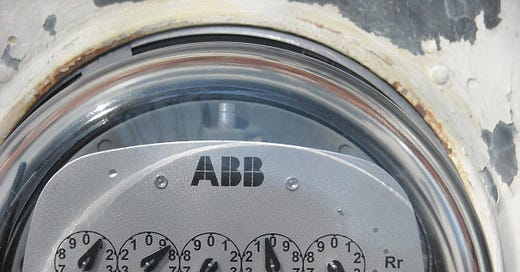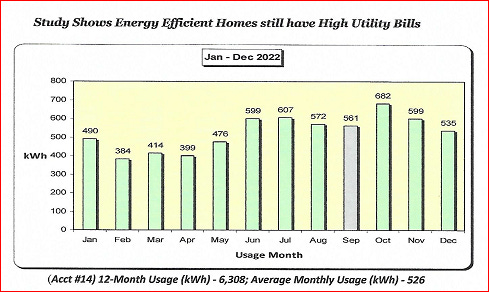Ohio, Lack of Legislative Oversight Results in High Energy Bills: Vince Welage
"The Public Should Help Shape the Future" - European Environmental Agency
Image by Rebecca Moninghoff from Pixabay
Introduction: “Involving the Public” The European Environment Agency has published two volumes of Late Lessons from Early Warnings. (European spelling intact) “The case studies across both volumes of Late lessons from early warnings cover a diverse range of chemical and technological innovations and highlight a number of systemic problems.”
“Involving the public can also help in choosing between those innovation pathways to the future (WBCSD, 2010; EC, 2011; WBGU, 2012); identifying and prioritising relevant public research (e.g. Diedrich et al., 2011); providing data and information from other knowledge holders — including NGOs, lay observers and citizens — in support of monitoring and early warnings; improving risk assessments; identifying and considering both alternatives to potentially hazardous agents and the unintended consequences of both actions and inactions on such agents; striking appropriate trade‑offs between innovations and plausible health and environmental harms; and, making decisions about risk-risk trade‑offs, [] In particular, a feature of the studies is the top-down nature of innovations — the history of antibiotics in animal feed and lead in petrol, for example, show how a very small number of people can take decisions which have a major impact on millions. The public should help shape the future, including helping to choose strategic innovation pathways [] - European Environmental Agency.”
Citizen Science: Smart Meter Supposed Cost Savings
Smart meters are often promoted with claims that they will offer customers opportunities to save money (for example by responding to time-of-use billing).
NGOs including the Conservation Law Foundation have embraced the idea that each home needs a smart meter and access to the supposed energy savings, as a matter of social and environmental justice.
(In fact, Germany is taking a very different approach regarding smart meters and not installing transmitting meters on homes with low usage.)
Regarding the implication that smart meters create cost savings, Vince Welage offers a glimpse into a very different reality on the ground, especially for ratepayers with low energy usage who require an opt -out. The is a longer summary of Vince’s (volunteer) research into actual customer bills in Ohio over the last several years. - Patricia Burke
Vince Welage: Lack of Legislative Oversight Results in High Energy Bills
In recent years, Ohio utilities have significantly raised its “customer fees” and that action has resulted in consumers losing control over a large portion of the monthly utility bill – even if energy use decreases.
Utility companies have placed most of its fixed costs into the usage (kWh) charge of a tariff. This decision has created a number of social problems as they relate to economic efficiency and equity.
Duke Energy has a well-documented history of enforcing the highest number of utility shutoffs and collections among Ohio energy utilities. Many of the shutoffs include “hardship” households that use retail supplier companies. In 2017, shutoffs were reported at 15%.
Monthly utility bills include a Supplier rate + Distribution rate (USB) + Delivery Rider for both gas and electric services.
A supplier rate chosen as the retail alternate supplier rate for any aggregation program has no connection to the delivery rider charges.
In some cases, a rider item code is a percentage of the base energy charge for that month per the fixed distribution rate.
Rider Code Charges Are Hidden From View
The total delivery rider amount listed in the billing details section is a group charge comprised of all the individual rider code charges assigned as non itemized tariffs and therefore hidden from the consumer. Some rider codes are Distribution related while others are Cost Recovery related. With different utilities serving specific parts of the state, Duke Energy bills and the tariffs that govern them vary, but the concepts are similar. Riders are costs that PUCO has approved to cover investments in energy infrastructure improvements or other additional expenses.
The electric tariff rider codes assigned as kWh usage-based riders vary depending on the effective charge rate. This explains then why consumers are seeing bills going up, but power usage down in certain months.
It is unclear how often PUCO performs a sunset review of all the active riders, but it isn’t done annually.
In addition to the PUCO, the General Assembly and the Ohio Supreme Court all have oversight over utility riders, to some degree. PUCO authority to approve riders comes from Ohio law. Ohio Supreme Court decisions impact whether utility companies can add fees to ratepayers’ bills. State regulators (PUCO) continue to authorize renewals for riders that fund specific programs. Legislators move forward to pass laws which permit or require the utility to take certain action on cost recovery. The rider rate code abuses are well established and apparently continue to be supported by legislators with no end in sight.
For more information, visit SW Ohio for Responsible Technology (SWORT) on Facebook; email us at swo4responsibletech@fuse.net
(Read earlier posts about Vince’s investigative work here: Smart Meter Science)
Duke Energy Ohio Electric Tariffs (Sheet 85) – RS
ESRR, Electric Service Reliability Rider (80) Pct (7) .78% - Contractor vegetation management services
ETCJA, Electric Tax Cuts and Jobs Act Rider (77) Pct (8) 2.01% credit - Refunds the electric distribution share of benefits from the 2017 Act
OET, Ohio Excise Tax (83) kWh (6) - First 2,000 kWh - $0.00465/kWh; Next 13,000 - $0.00419/kWh - Additional kWh - $0.00363 per kWh
** PF, Power Future Initiatives (84) Flat Fee (3) $.40/mo - Recovery of capital costs related to evolving distribution grid
USR, Universal Service Fund (86) kWh (25) - Assistance provided on energy bills to low income customers
UE-GEN, Uncollectable Expense, Electric Generation (88) kWh (14) - Recovery of uncollectible accounts related to generation services
LGR, Legacy Generation Rider (128) Flat Fee (11) $1.18/mo - Cost recovery of incurred cost related to legacy generation source - House Bill 6 - OVEC coal plants provision (subsidy effective 2020-2030)
UE-ED, Uncollectible Expense, Electric Distribution (108) kWh (16) - Recovery of uncollectible accounts related to distribution services
BTR, Base Transmission Rider (89) kWh (14) $.015510/kWh - Recovery of transmission-related costs approved by FERC
DSR, Distribution Storm Rider (101) Flat Fee (8) $.08/mo - Recovery of costs due to major storms
** DCI, Distribution Capital Investment (103) Pct (38) 14.682% - Revenue recovery applied to distribution charges (
Smart meters) DR-ECF, Economic Competitive Fund (105) Pct (18) .12% - PUCO authorized charges applied to distribution charges
EE-PDRR, Energy Efficiency, Peak Demand Response (119) kWh (6) - Recovery of expected costs for EE programs over 12 month period
DDR, Distribution Decoupling Rider (122) kWh (10) - Rate adjustment to decrease a distribution-related system incentive
** AMO, Advanced Meter Opt-Out - RS (127) Flat Fee (1) $30/mo - One-time fee of $100 and recurring fee of $30/month (Smart meters)
RS - Residential Services - *Not Complete List - **Specific to Smart meters
For more information, visit SW Ohio for Responsible Technology (SWORT) on Facebook; email us at swo4responsibletech@fuse.net









